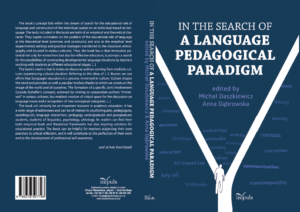ERLA’S DIRECTORY – Section 1.2
SPACE WHERE ERLA MEMBERS CAN SHARE KEY RELEVANT FACTS, IDEAS, CONCEPTS AND FINDINGS
TEXTUAL HIGHLIGHTS
| FACTS | ||
| ERL BOOK – publication co-edited by two ERLA members | In the Search of A Language Educational Paradigm. Part I: In the search of A Language Educational Paradigm. Part II. In the Serach of A Language Didactic Paradigm. |  |
| 1st ERL Online Session (5 May) | Learner and Teacher Language Identity
See the titles of contributions. |
 |
| 2nd ERL Online Session (5-6 Oct) | Linguistic Component of Pedagogical Identity
See the titles of contributions. |
 |
| Publication of ERL Journal Volume 2020-1(3) | Examining Learner and Teacher Language Identity. Sections: Identity on the level of critical awareness, Identity on the level of official documents, Identity on the level of educational texts, Identity on the level of didactic practics |  |
| Publication of ERL Journal Volume 2020-1(4) | (Re-)Shaping One’s Identity with Language. Sections: Interdisciplinary perspectives, Cross-cultural encounters, Pursuits of linguistic quality, Assimilative intersections |  |
VISUAL HIGHLIGHTS
|
FINDINGS |
||
| Students’ individual encounters with and personal reflection on questions relating to four educational domains |  |
Language learners prove to have enountered far fewer questions relating to the axiological and affective side of linguistic experience, with the former being viewed by them as more significant than the latter. Hence, their reflection on their linguistic personality becomes limited and two (our of four) educational domains fall out their commonplace experiencing of language. To read more, go to Language personality as a four-dimensional construct falling outside university students’ reflection |
| Relationship between the focus on 4 characteristics of a foreign language and the complete mastery of a topic as perceived by students from different countries |  |
The structural orientation (within and across topics) proves to be approached least posiively as compared to the command of lexis, fluency, and – most interestingly – correctness. With regard to the 4 facets, there exist clear differences between how they are approached by students from Asia and Africa as opposed to Europeans (or, in other words, how a foreign language is “composed” by them). To find out more, go to ‘Do English learners from different countries approach (“compose”) topics differently. A study report |


